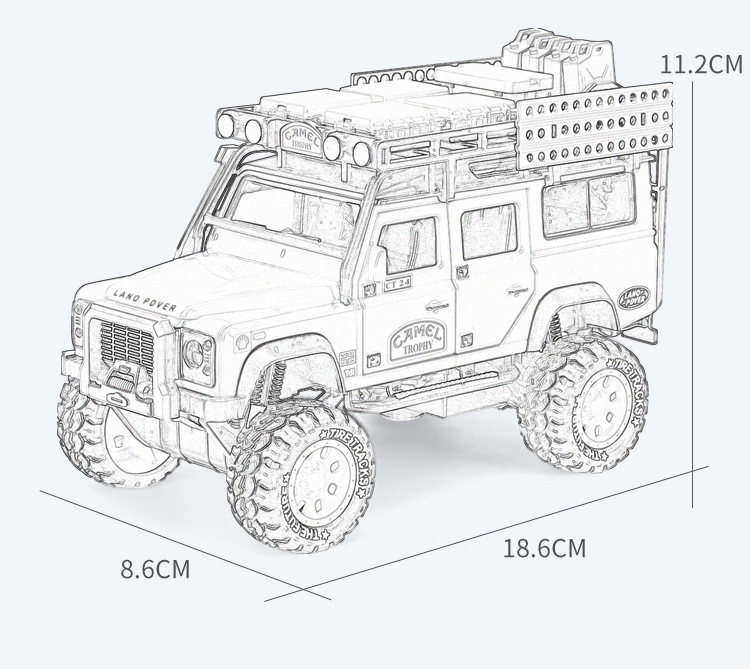Material: Alloy
Car model ratio: 1:30
Function: music / vocal, flash
Color: yellow, red, green


Children’s toy cars are a staple in the world of toys, captivating the imaginations of kids of all ages. Here’s a rundown on why they remain popular and what makes them great for both play and development:
Educational and Developmental Benefits
- Motor Skills Development: Playing with toy cars helps young children develop both fine and gross motor skills as they use their hands to push the cars and design tracks.
- Cognitive Growth: Toy cars can be instrumental in teaching concepts such as cause and effect (how pushing a car harder makes it go faster or further), basic physics, and even early math skills through counting and sorting cars by color or type.
- Language Skills: As children play together with toy cars, they communicate and negotiate roles, improving their language and social skills.
- Creativity and Imagination: Toy cars encourage imaginative play, allowing children to create scenarios and stories, developing their creativity and storytelling skills.
- Understanding the World: Through play, children can learn about different types of vehicles, their functions, and their importance in the world around them.
Variety and Versatility
- Types and Models: From realistic miniatures of actual cars to fictional and fantasy vehicles, there’s a vast array of toy cars to capture the interest of any child. This variety includes race cars, construction vehicles, emergency services vehicles, and classic cars, among others.
- Materials and Durability: Toy cars are made from various materials, including die-cast metal, plastic, wood, and even recycled materials, offering choices for durability, tactile experience, and environmental consciousness.
- Technological Features: Many toy cars now come with interactive features like remote controls, light and sound effects, and even educational content, making them more appealing and engaging for children.
- Playsets and Accessories: Toy cars are often part of larger playsets, including tracks, garages, and themed sets, which can enhance playtime and provide a more immersive experience.
Social and Emotional Development
- Sharing and Cooperation: Playing with toy cars often involves other children, which encourages sharing, taking turns, and working together to build tracks or create scenarios.
- Emotional Connections: Children can become very attached to their toy cars, seeing them as more than just toys. They often have favorites, which can help in teaching care and responsibility for their belongings.
Market Appeal
- Broad Age Range: Toy cars appeal to a wide age range, from toddlers who enjoy simple push-and-go cars to older children and collectors who appreciate detailed models and remote-controlled cars.
- Gender Neutral: While traditionally marketed towards boys, toy cars are increasingly recognized as gender-neutral, appealing to children regardless of gender.
- Collectibility and Gifting: With ranges from affordable to high-end collectible models, toy cars make excellent gifts and can even be a hobby that parents and children share.
Conclusion
Children’s toy cars offer much more than just entertainment. They are tools for learning, development, and creativity, making them enduringly popular in the toy market. Their appeal crosses generational and gender lines, making them a versatile choice for retailers and a beloved option for families.
It may also interest you































Reviews
Clear filtersThere are no reviews yet.